If worldbuilding is the art of making someone believe in a world that doesn’t exist (and it is), then anything that shakes that belief is a strike against your worldbuilding. Every reader is going to be different, but you never know how many strikes it will take before they set your book aside and never come back to it. By committing these worldbuilding fouls, you’re risking your readership.
What sort of fouls are we talking about?
Non-Sequitur
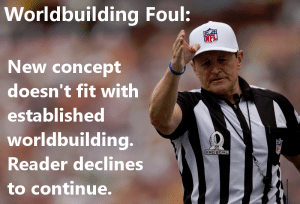 Whenever you introduce something new to your reader, it’s going to need context. Sometimes just the way you introduce this new worldbuilding element will be enough to mesh it with your world without any additional effort. Making up a company that makes a deluxe brand of pistol is fine for a Western, but doing the same in a medieval fantasy would cause a double-take. Introducing a character as an escaped gladiator slave would work for a Romanesque world, but would raise all sorts of questions in a romance novel.
Whenever you introduce something new to your reader, it’s going to need context. Sometimes just the way you introduce this new worldbuilding element will be enough to mesh it with your world without any additional effort. Making up a company that makes a deluxe brand of pistol is fine for a Western, but doing the same in a medieval fantasy would cause a double-take. Introducing a character as an escaped gladiator slave would work for a Romanesque world, but would raise all sorts of questions in a romance novel.
If your world has some oddball elements to it, that’s fine. But you have to understand that you’re squealing the brakes in your readers’ minds. That means you need to fit that non-sequitur element into your world. A quick explanation can work, but can be clumsy. If you have to break the flow of a scene to stop, pull out the blackboard, and teach, your story will suffer for it. A better method could be to have one of your characters react with confusion that your reader can relate to. It’s a technique called lampshading.
Tone Mismatch
Setting a tone can be a constant e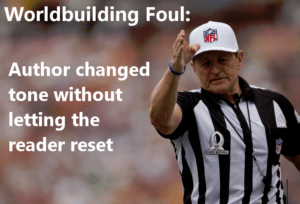 ffort throughout a story. Dark, lighthearted, romantic, nostalgic, or snarky, each story will take on its own personality. And while it’s fine to have the tone shift from scene to scene, after a while readers are going to develop a set of expectations. But it needs to be a stretching of expectations, not a jarring break. You can have a Red Wedding in Game of Thrones (or more precisely, in A Storm of Swords), because that’s just a shift of tone within a scene to something that’s within bounds of the series. It’s shocking, but in a way that readers completely believe. But J.K. Rowling couldn’t have written in an explicit sex scene in the Harry Potter series, and J.R.R. Tolkien couldn’t have let the Uruk-hai break into a choreographed musical number just before joining a battle.
ffort throughout a story. Dark, lighthearted, romantic, nostalgic, or snarky, each story will take on its own personality. And while it’s fine to have the tone shift from scene to scene, after a while readers are going to develop a set of expectations. But it needs to be a stretching of expectations, not a jarring break. You can have a Red Wedding in Game of Thrones (or more precisely, in A Storm of Swords), because that’s just a shift of tone within a scene to something that’s within bounds of the series. It’s shocking, but in a way that readers completely believe. But J.K. Rowling couldn’t have written in an explicit sex scene in the Harry Potter series, and J.R.R. Tolkien couldn’t have let the Uruk-hai break into a choreographed musical number just before joining a battle.
If you want to include an off-tone scene or character, set it up early on. Plenty of dark, somber works include a comedic element to blunt the onset of reader depression. Just set the expectation that you’re going to shift to that gear, and make sure that it blends in with the rest of the story.
Reality Failure
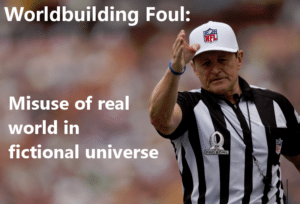 You can’t make up everything. At some point, no matter how thoroughly you build out your secondary world, you’re going to draw a line in the sand and say “everything else works like you’d expect.” But that can lead into all sorts of complications. It’s incumbent upon the writer to be as factually correct as possible. Once you’ve left something to the realm of “as-is,” you don’t get to say “that’s just how it works in my world” anymore.
You can’t make up everything. At some point, no matter how thoroughly you build out your secondary world, you’re going to draw a line in the sand and say “everything else works like you’d expect.” But that can lead into all sorts of complications. It’s incumbent upon the writer to be as factually correct as possible. Once you’ve left something to the realm of “as-is,” you don’t get to say “that’s just how it works in my world” anymore.
Examples:
Jill went to the doctor with abdominal cramps. He diagnosed her with acute appendicitis and sent her home with a prescription for Amoxicillin.
(and lost his license the next day when her appendix ruptured)
“Now, if we just wrap this copper wire around your gold hair pin… voila! We have an electromagnet!”
(no, you have a movie prop; gold is non-magnetic)
This ’63 Corvette was a thing of beauty. The engine hummed, not even breaking a sweat as James hit the end of the on-ramp. With miles of open road ahead and not a cop in sight, he opened her up. As the tach neared the red line, he dropped it into 5th and watched the speedometer rise into the 100’s.
(So close… the ’63 Corvette is a 4-speed. Car enthusiasts will jump on this one)
The only defenses are to do your research and have eagle-eyed beta readers, ready to pounce on your mistakes.
Continuity
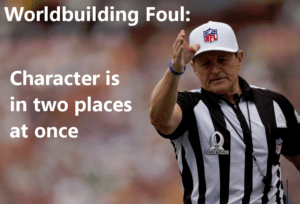 Once you say something in the narrative (characters are fine to be wrong, but not an objective POV narrative) it becomes true. Once something is true, it needs to stay true, or the change has to occur in the narrative. Getting your own details wrong is one of the worst worldbuilding fouls you can commit. Fortunately I devoted a whole article to self-editing for continuity.
Once you say something in the narrative (characters are fine to be wrong, but not an objective POV narrative) it becomes true. Once something is true, it needs to stay true, or the change has to occur in the narrative. Getting your own details wrong is one of the worst worldbuilding fouls you can commit. Fortunately I devoted a whole article to self-editing for continuity.
If earth magic requires a shard of granite on page 10, it shouldn’t suddenly need hematite on page 710. If Marsten was lost at sea ten years ago, don’t give him a six-year-old son. If paint yourself into a corner and you need two different versions of something to be true, roll up your sleeves and edit the story until it all works out without contradictions. Your readers will thank you for it (and maybe even pick up the sequel when it comes out).
Overload
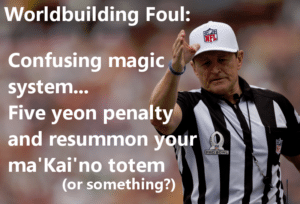 At some point, your reader just wants a story. Having a wondrous, unique world can be refreshing, but if the process of learning is all that the story is offering them, most readers are going to say enough is enough. This is all the more problematic when your worldbuilding is complex or potentially confusing. Maybe you thought of a “perfect” magic system, but if you can’t convey it to your readers in a way that doesn’t distract from the story, then it’s not doing its job as an element of that story. The same goes for anything else you drop in your readers lap and expect them to puzzle through: geography, conlangs, cultures, magic, science, religions. Every time you endeavor to teach your reader something about your world rather than just integrate it as part of the story, you’re running this risk.
At some point, your reader just wants a story. Having a wondrous, unique world can be refreshing, but if the process of learning is all that the story is offering them, most readers are going to say enough is enough. This is all the more problematic when your worldbuilding is complex or potentially confusing. Maybe you thought of a “perfect” magic system, but if you can’t convey it to your readers in a way that doesn’t distract from the story, then it’s not doing its job as an element of that story. The same goes for anything else you drop in your readers lap and expect them to puzzle through: geography, conlangs, cultures, magic, science, religions. Every time you endeavor to teach your reader something about your world rather than just integrate it as part of the story, you’re running this risk.

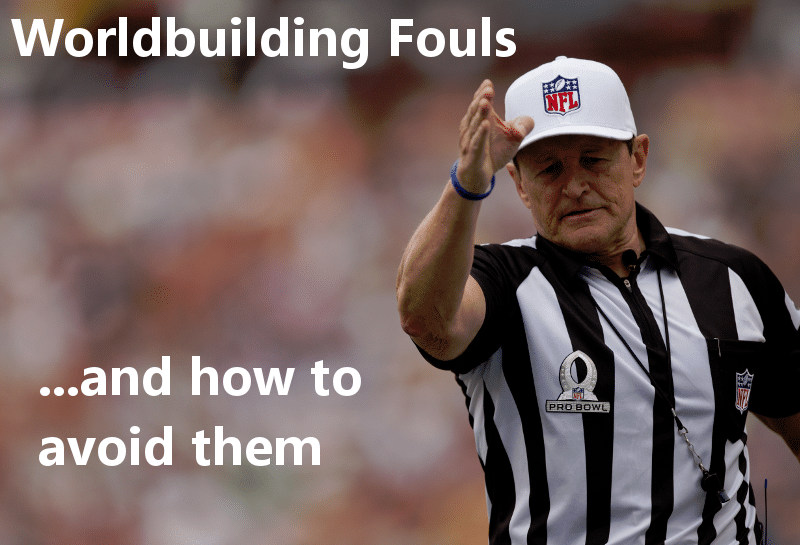
Mr. Morin,
Good points. I always appreciate what you bring. Very helpful.
L. Stephen
PS. Second to last Paragraph has an error. “If paint yourself into a corner…” should be: If you paint yourself…